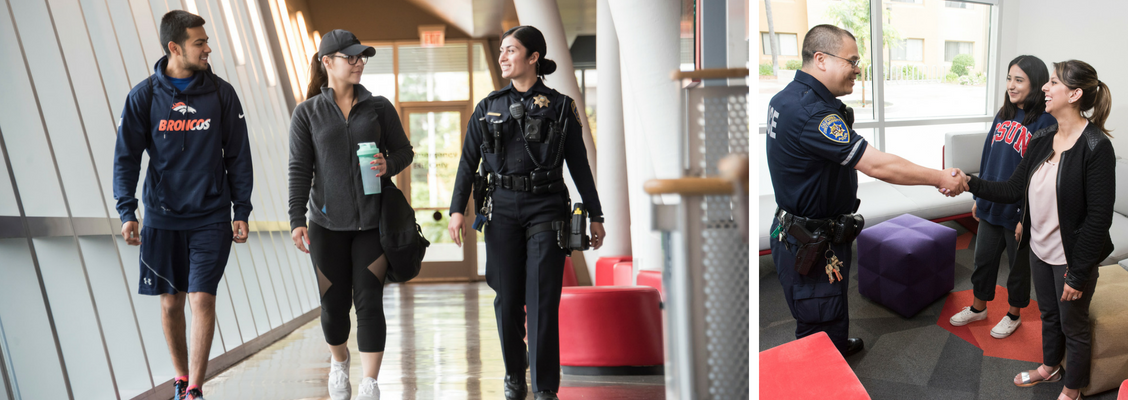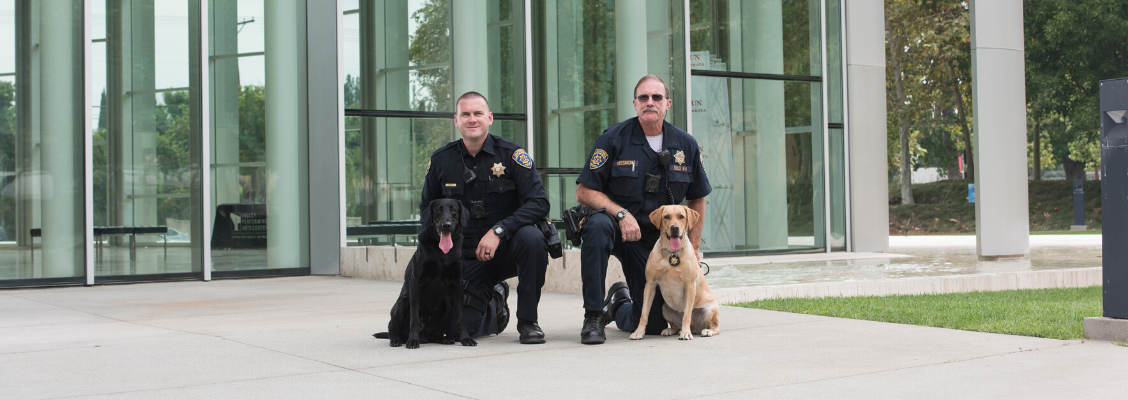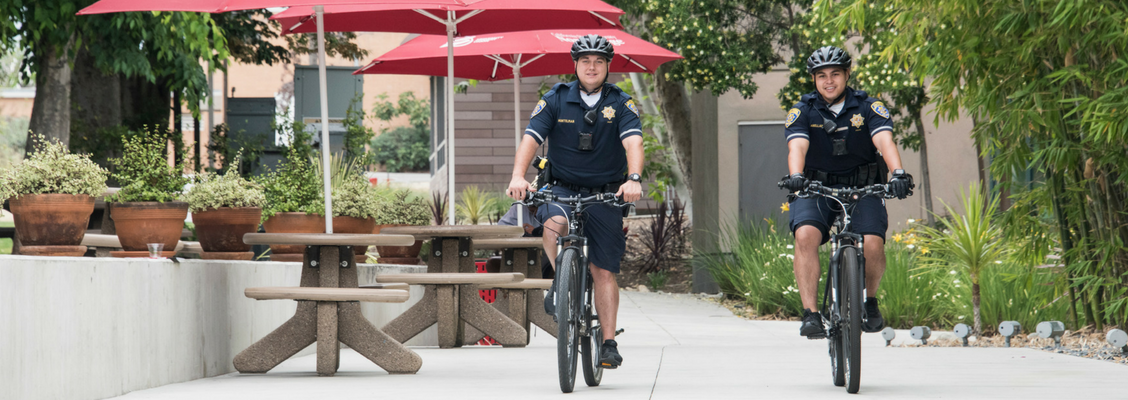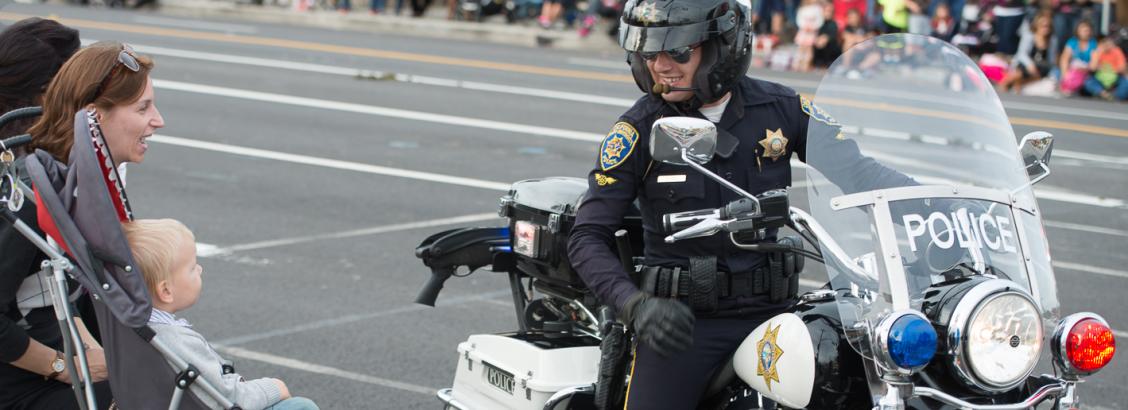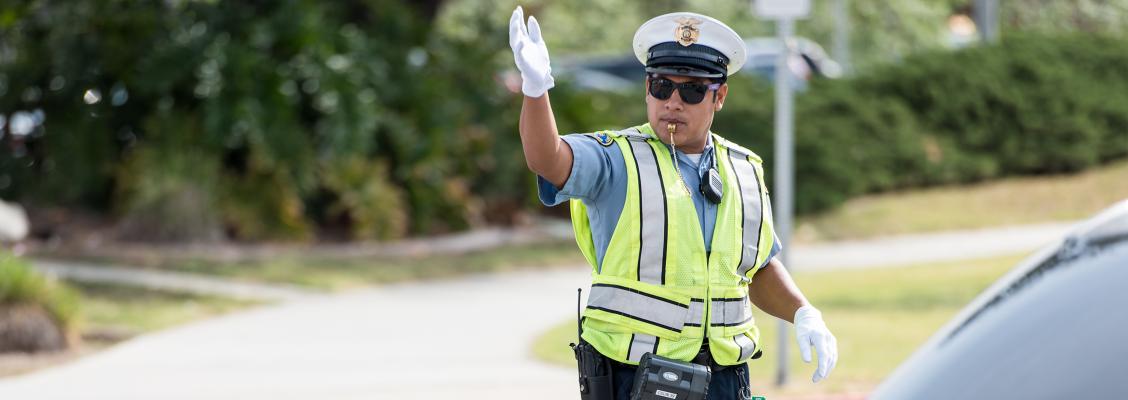Traffic Collisions
Vehicle Burglary/Theft Prevention
Disabled Vehicles
Vehicle Locks & Locking Devices
General Tips
- Carry a cell phone
- Never let fuel level get below ¼ tank.
- Drive on well-traveled streets and keep your car in gear while it is stopped.
- Allow at least one car length space between your car and the car in front of you so that you can escape should someone try to get into your car.
- [Inset: stock photo of cars evenly spaced.]
- Always be aware of your surroundings and check your rear view mirror often
- If your car breaks down, open the hood and stay inside. If someone stops to help, do not open your window or door, but have him or her call for assistance.
- Beware of people who yell, honk, and point at your car as if something is wrong.
- If your car breaks down, stay inside and lock the doors. If anyone approaches to help, crack the window and ask them to call the police. Ask uniformed personnel to show identification if you are weary.
- Beware of people who motion and ask you to stop and lend assistance; if you want to assist someone whose car has broken down, go to the nearest phone or use your cell phone and call the Police.
- Beware of people who may bump your vehicle from behind; if you think you were bumped intentionally, signal the other person to follow you to the nearest police station or populated area.
- If you get lost, do not pull over until you find a well-lit public area, and then call the police.
- If you suspect you are being followed, drive to a well-lit public area and call the Police.
- Always carry an emergency kit in your vehicle with first aid supplies, flares, flashlight, jumper cables, blanket, etc.
- Never pick up hitchhikers. It’s not safe and against the law to hitchhike.
- If a person with a weapon confronts you and wants your vehicle, give it up. No car is worth being injured or losing your life over.
For additional information and resources on vehicle safety visit:
The California Highway Patrol or NHTSA (National Highway Traffic Safety Administration)
Burglary/Theft Prevention
Many crimes are committed simply because the opportunity presents itself to the criminal. Don't be a victim of opportunity! Following a few, simple crime prevention safety tips will minimize criminal opportunities, thus making your life much safer and more enjoyable.- Always ensure ALL windows are up and doors locked.
- Don't invite a vehicle break-in by leaving packages or valuables, (laptops, cellular phones, compact disc players, etc.), in sight. Take valuables with you. If you have no other choice, put them under the seat or lock them in the trunk.
- If you own an older motor vehicle, replace standard door lock buttons with tapered ones. These replacements are inexpensive and much more difficult to pry up.
- Do not leave your motor vehicle registration, insurance policies, credit cards, or other important papers in a vehicles glove compartment.
- Never leave your keys in a vehicle while it's unattended
- Consider installing safety security film on the windows (tint). With the film added to the glass, the windows will be 300%-400% stronger. Intruders must cut their way through the glass, thus taking more time. The safety film is clear and reflects up to 98% of the suns ultraviolet rays.
- Never hide a second set of keys in your vehicle. Extra keys can easily be found. Store a spare key in your wallet.
- Avoid parking next to vans, pickups, and other large vehicles. These large vehicles can "hide" your vehicle and make it more difficult for others to observe.
- When you park along a curb, angle the front tires sharply to the left or right, making it difficult for the thief to tow it away. Wheels should also be turned to the side in driveways and parking lots.
- If your vehicle is rear-wheel drive, back in to your driveway. Rear wheels lock on four-wheel drive vehicles, making them more difficult to tow. Front-wheel drive vehicles should be parked front-end first.
- Periodically check your license plates to make sure they haven't been stolen, switched, or altered.
- Use "Operation Identification" and engrave your driver's license number or social security in several concealed places on, or in your motor vehicle. Drop a business card into the window channel, beneath the seat or behind the dash panel.
- Engrave your batteries, wheel covers, and car stereos with either your drivers license number or your state's abbreviation.
- Park in well-lighted and busy areas.
- Park in an attended lot. Motor vehicle thieves do not like witnesses and prefer unattended parking lots.
- When parking in an attended lot, leave only the ignition/door key. If your trunk and glove box use the same key as the door, have one of them changed.
- On cold mornings, never leave your motor vehicle running while it is unattended in order to warm up.
- For each motor vehicle you own or lease, record the following information and keep it in a safe location (not in the vehicle):
- Make & Model, Color, Year and Registration Number (Plates)
- Vehicle Identification Number (VIN)
- Name of Insurance Company and Agent
- Engine Size
- Any peculiarities of vehicle (dents, pin stripes, etc.)
- Key Number
- Avoid transferring items to the trunk of a vehicle in the parking lot. A thief may be watching. Checkbooks, credit cards or other credentials which a thief could misuse should not be left in a motor vehicle.
- Park your vehicle as close as possible to an open business.
- Lock your garage door. Also, lock your vehicle doors, even when it's in the garage.
- When you are out-of-town and leaving your motor vehicle, remove the electronic ignition fuse, rotor distributor, or the coil wire to prevent motor vehicle theft.
Disabled Vehicles
If you see a disabled motor vehicle, instead of stopping to help, drive to a nearby telephone and inform the police of the vehicles location.
If your vehicle becomes disabled, attach a white handkerchief to the door handle or window. Lock the doors and stay inside the vehicle. If someone stops to help, do not open your door or window. Ask the person to please go to a telephone and call for help.
Locks & Locking Devices
- Use metal, cane type, steering wheel wheel locks. The metal cane hooks around the brake pedal on one and, and around the steering wheel rim or spoke on the other. The device is drawn tight and locked with a key.
- Use a temporary snap lock, which fits over the bulge of the steering column of late-model American cars, where the ignition switch is, and prevent the ignition from being turned on.
- Do not disconnect the buzzer that warns of keys left in the ignition. It's for your protection.
- Use a locking gas cap, not only to prevent theft of gasoline, but to limit a thief to the amount of driving he can do with one tank.
- There are special locks made for various marketable parts of cars. Battery locks or wheel cover locks may save these items.
- If your vehicle is not already equipped with one, install an interior hood release.
- Install different locks for the door, ignition, and trunk. A thief who might obtain your vehicles door key still won't have the ignition key.



